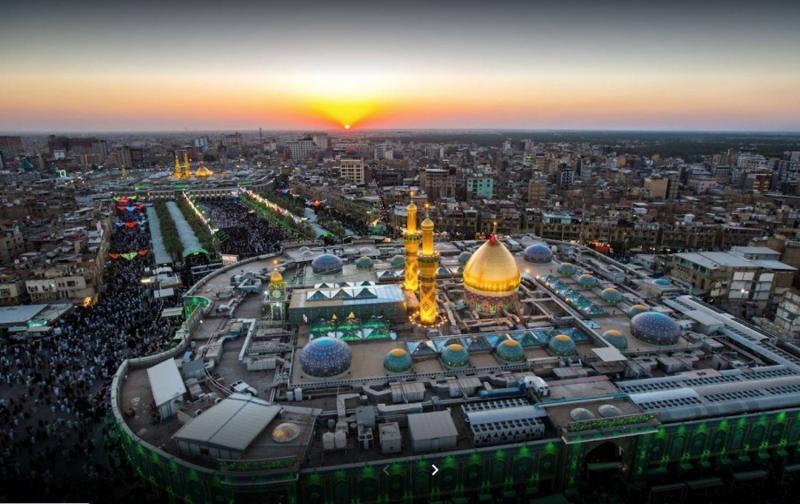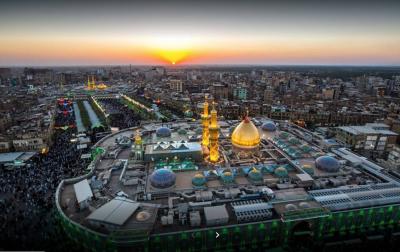Research conducted by an open database in Tehran has shown that the Iranian government allocated at least 1.4 billion tomans (23.4 million dollars) from the general budget for advertising in religious cities in Iraq. This amount is equivalent to the daily wage of about six million Iranian workers, based on a decision by the Supreme Labor Council for 2024, which set the daily wage for workers at 238,873 tomans (3.9 dollars).
According to this report, over 1 billion tomans (1.6 million dollars) from the government advertising budget for religious cities in Iraq was allocated to the Organization for the Reconstruction of Holy Shrines, which was established about two decades ago by a decree from Supreme Leader Ali Khamenei. This is a subsidiary entity of the Quds Force of the Revolutionary Guard. The organization operates in Najaf, Karbala, Kazimayn, Kufa, and Samarra, and under the pretext of reconstructing Shia religious centers, it conducts political advertising in favor of the Iranian Islamic Republic regime.
In the budget allocated to this entity in the Iranian budget law for 2024, there is a provision that discusses 200 billion tomans (33.2 million dollars) earmarked "to assist the Committee for Coordination and Development of the Arbain Facilities and Services in Iraq and the Bahar Foundation in Najaf Ashraf." Officials from the Organization for the Reconstruction of Holy Shrines plan to reconstruct more than 150 Shia religious sites in Iraq and other countries over the next 20 years. This funding is separate from the substantial amount spent by the regime for hosting the Arbain ceremonies.
The Iranian government has also allocated 200 billion tomans (33.2 million dollars) from the general budget for 2024 to renovate the former home of Ruhollah Khomeini in Najaf. The number of religious organizations and the expenses for propaganda by the Iranian regime in Iraq and other Islamic countries are not limited to these cases, but due to the financial opacity of religious institutions and propaganda, it is difficult to ascertain the exact financial figure for external activities.
In the Iranian general budget, there are funds allocated for supporting cultural and religious activities abroad, such as supporting cultural programs overseas, backing cultural initiatives for the International Islamic Jurisprudence Assembly based in Saudi Arabia, and the Thaqalayn Cultural Network. In addition, organizations such as the Organization for Islamic Culture and Relations, the Assembly for Proximity of Islamic Religions, and Al-Mustafa University are funded from public resources in Iran. The primary function of these institutions is to promote the Islamic Republic regime abroad.
In November 2022, after the hacker group known as "Black Reward" breached the emails of the Organization for Islamic Culture and Relations, documents revealed that the Iranian regime had spent large sums of money to expand its influence in Islamic countries. These funds are allocated in various ways, including, but not limited to, building a mosque in an African country and producing media content about the life of Qassem Soleimani in other countries.
An examination of the same documents showed that between December 2021 and March 2022, a period of three months, the regime spent at least 3 million euros (3.28 million dollars) from the pockets of Iranians to operate the Relief Committee in Iraq, build a mosque in Guinea, produce media content and propaganda about the life of Qassem Soleimani in Kenya, provide financial support to a charitable organization in Tanzania, and grant scholarships to foreign students.
The Organization for Islamic Culture and Relations is a government entity with a specific purpose that undertakes various activities aimed at enhancing Iran's influence represented by Supreme Leader Ali Khamenei in foreign countries, especially in poor nations. This government organization is affiliated with the Ministry of Culture and Islamic Guidance, but its foundation was drafted and approved under the supervision of Supreme Leader Ali Khamenei in 1995. The recently banned Hamburg Islamic Center in Germany is another institution associated with the Iranian regime, as confirmed by the German Federal Security Service, which indicated that this center is linked to the regime in Tehran and is located next to the Iranian embassy.
It is known that the Iranian regime spends large sums of money from the public budget every year to hold Arbain rituals. Besides allocating 100 billion tomans (16.6 million dollars) from the current year’s budget, all ministries, municipalities, provinces, and government organizations are also required to allocate part of their budgets for hosting the Arbain ceremonies.
In this context, Mohammad Reza Aref, the first vice president of Iranian President Masoud Behzadkian, announced the first governmental measure of allocating 400 billion tomans (66.4 million dollars) for Arbain ceremonies under the pretense of "preventing unexpected incidents."
A few days later, according to a decision by the Tehran City Council, the municipality of the capital was obligated to allocate 107 billion tomans (17.8 million dollars) for hosting Arbain ceremonies. At the same time, the spokesperson for the City Council of Karaj stated that the municipality of this city approved a budget of 98 billion tomans (163,000 dollars) for hosting Arbain ceremonies. Thus, other government institutions and organizations also spend large sums annually for Arbain ceremonies; however, due to the lack of transparent and clear reporting on the scale and source of these financial resources, it is impossible to estimate them precisely.




